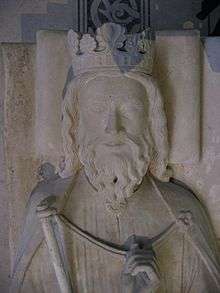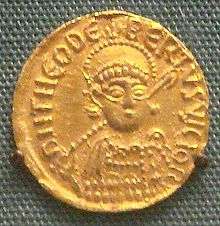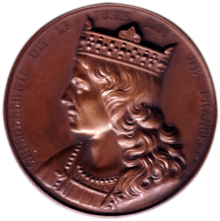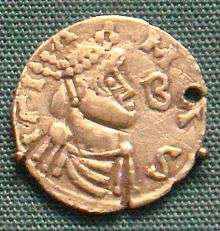List of Frankish kings

The Franks were originally led by dukes (military leaders) and reguli (petty kings). The Salian Merovingians rose to dominance among the Franks and conquered most of Roman Gaul. They also conquered the Gaulish territory of the Visigothic Kingdom in 507. The sons of Clovis conquered the Burgundians and Alamanni. They acquired Provence and made the Bavarii and Thuringii their clients. The Merovingians were later replaced by a new dynasty called the Carolingians in the 8th century. By the end of the 9th century, the Carolingians themselves were replaced throughout much of their realm by other dynasties. The idea of a "King of the Franks" or Rex Francorum gradually disappeared over the 12th and 13th centuries.
A timeline of Frankish rulers is difficult since the realm was, according to old Germanic practice, frequently divided among the sons of a leader upon his death and then eventually reunited.
Dukes and reguli
Early rulers and Ripuarians
This list of early rulers is incomplete, as our sources leave open many gaps.
| Ruler | Description |
|---|---|
| Ascaric | |
| Merogais | |
| Mallobaudes | |
| Genobaud | |
| Sunno | |
| Marcomer | |
| Pharamond | son of Marcomer, semi-legendary king. (Pharamond reigned with Chlodio 420–448)[1] |
| Chlodio | (Chlodio reigned with Pharamond 420–448)[1] |
| Theudemeres | son of Richomeres, King circa 422 |
| Aegidius | |
| Sigobert the Lame | King 483–507, killed by his son Chloderic the Parricide |
| Chlodoric the Parricide | son of Sigebert, King 507, dethroned by Clovis |
Rulers of the Salians
| Ruler | Description |
|---|---|
| Clodio | son of Theudemeres, King at Dispargum and later Tournai (426–447) |
| Merovech | possible son of Chlodio, King at Tournai (447–458) (Merovee or Merovaeus reigned 448–458)[1] |
| Childeric I | son of Merovech, King at Tournai (458–481)[1] |
| Clovis I | son of Childeric I, King at Tournai (481–511), later united most of the Franks and Roman Gaul.[1] |
All of the following may have been related to Clovis in some degree and eventually removed by before 509:
| Ruler | Description |
|---|---|
| Chararic | |
| Ragnachar | probably king at Cambrai from before 486, killed by Clovis |
| Ricchar | brother of Ragnachar, killed by Clovis at Cambrai |
| Rignomer | brother of Ragnachar, killed by Clovis at Mans |
Merovingian kings of the Franks
| All the Franks | |||||
|---|---|---|---|---|---|
| Image | Name | Date of Birth | Date of Death | Reign | Relationship with predecessor |
 |
Clovis I | c. 466 | 27 November 511 | 509–511 (481–511)[1] | N/A |
Clovis I united all the Frankish petty kingdoms as well as most of Roman Gaul under his rule, conquering the Domain of Soissons of the Roman general Syagrius as well as the Visigothic Kingdom of Toulouse. He took his seat at Paris, which along with Soissons, Reims, Metz, and Orléans became the chief residences. Upon his death, the kingdom was split among his four sons:
| Soissons | Paris | Orléans | Reims | ||||
|---|---|---|---|---|---|---|---|
| Picture | Name | Picture | Name | Picture | Name | Picture | Name |
| |
Chlothar I 511–561 (Clotaire r. 511–558) (Neustria)[1] |
 |
Childebert I 511–558 (Neustria)[1] |
 |
Chlodomer 511–524 (Neustria)[1] |
 |
Theuderic I (Thierry I r. 511–534) (Austrasia)[1] 511–534 [2] |
| Passed to Paris then to Soissons | |||||||
 |
Theudebert I 534–548 (Austrasia)[1] | ||||||
| Theudebald 548–555 (Austrasia)[1] | |||||||
| Passed to Soissons in 558 | Passed to Soissons in 555 | ||||||
Chlothar I eventually (558-561)[1] inherited all of the Frankish kingdoms after the deaths of his brothers or their successors. After his own death, the kingdom was once again split among his four sons:
| Soissons (eventually Neustria) |
Paris | Orléans (eventually Burgundy) |
Reims and Metz (eventually Austrasia) | ||||
|---|---|---|---|---|---|---|---|
| Picture | Name | Picture | Name | Picture | Name | Picture | Name |
 |
Chilperic I 561–584 (Neustria)[1] |
_-_Caribert%2C_roi_franc_de_Paris_et_de_l'ouest_de_Gaule_(mort_en_567).jpg) |
Charibert I 561–567 (Caribert r. 561–593) (Neustria)[1] |
 |
Guntram 561–592 (Gontran r. 561–570) (Neustria)[1] [3] |
 |
Sigebert I 561–575 (Austrasia)[1] |
| Partitioned in 567, eventually falling in the hands of Soissons | |||||||
 |
Childebert II 575–595 | ||||||
 |
Chlothar II 584–629 (Clotaire II, son of Chilperic, r. 584-628)[1] | ||||||
| Passed to Reims and Metz in 592 | |||||||
.jpg) |
Theuderic II 595–613 |
- | Theudebert II 595–612 | ||||
| Passed to Orléans in 612 then to Soissons | |||||||
| - | Sigebert II 613 | ||||||
| Passed to Soissons in 613 | |||||||
 |
Dagobert I 623–629 (r. 628–638)[1] | ||||||
Chlothar II defeated Brunhilda and her grandson, reunifying the kingdom. However, in 623, in order to appease particularistic forces and also to secure the borders, he gave the Austrasians his young son as their own king. His son and successor, Dagobert I, emulated this move by appointing a sub-king for Aquitaine, with a seat at Toulouse, in 629 and Austrasia in 634.
| Neustria, Austrasia & Burgundy | Aquitaine | ||
|---|---|---|---|
| Picture | Name | Picture | Name |
 |
Dagobert I 629–634 |
-2.jpg) |
Charibert II 629–632 |
| Chilperic 632 | |||
| autonomy until c. 767. | |||
| Neustria and Burgundy | Austrasia | ||
|---|---|---|---|
| Picture | Name | Picture | Name |
 |
Dagobert I 634–639 |
 |
Sigebert III 634–656/660 |
 |
Clovis II 639–655 | ||
 |
Chlothar III 655–673 |
- | Childebert the Adopted 656–661 |
| Inherited by Chlothar III, but given to Childeric II in 662. | |||
 |
Childeric II 662–675 Unified rule from 673–675 | ||
 |
Theuderic III 673 | ||
 |
Childeric II 673–675 Displaced Theuderic III until his death in 675 | ||
 |
Theuderic III 675–691 Unified rule after 679 | ||
.jpg) |
Clovis III 675–676 | ||
.jpg) |
Dagobert II 676–679 | ||
| Passed to Neustria and Burgundy | |||
Theuderic III was recognized as king of all the Franks in 679. From then on, the kingdom of the Franks can be treated as a unity again for all but a very brief period of civil war. This is the period of the "idle kings" who were increasingly overshadowed by their mayors of the palace.
| Image | Name | Date of Birth | Date of Death | Reign | Relationship with predecessor |
|---|---|---|---|---|---|
 |
Theuderic III | c. 654 | 12 April 691 | 679–691 | N/A |
_-_Clovis_III_roi_d'Austrasie_en_691_(682-695).jpg) |
Clovis IV | c. 678 | c. 695 | 691–695 | son of |
 |
Childebert III | c. 670/683 | 23 April 711 | 695–711 | brother of |
| Dagobert III | c. 699 | 31 December 715 | 711–715 | son of | |
 |
Chilperic II | c. 672 | 13 February 721 | 715–720 | first cousin once removed of |
| Chlothar IV | ? | c. 719 | 717–718 rival puppet king in Austrasia |
relative of | |
 |
Theuderic IV | c. 712 | 16 March/30 April 737 | 720–737 | son of Dagobert III |
| interregnum 737–743 | |||||
_-_Child%C3%A9ric_III_roy_de_France_(754).jpg) |
Childeric III | c. 717 | c. 754 | 743–752 | relative of |
Carolingians
Mayors of the palace
The Carolingians were initially mayors of the palace under the Merovingian kings, first in Austrasia and later in Neustria and Burgundy. In 687, Pippin of Heristal took the title Duke and Prince of the Franks (dux et princeps Francorum) after his conquest of Neustria in at the Battle of Tertry, which was cited by contemporary chroniclers as the beginning of Pippin's reign. Between 715 and 716, the descendants of Pippin disputed the succession.
- Pippin I of Landen (Austrasia: 623–629 and 639–640)
- Grimoald I (Austrasia: 643–656; died 662)
- Pippin II of Herstal (Austrasia: 680–714, Neustria and Burgundy: 687–695)
- Drogo (Burgundy: 695–708)
- Grimoald II (Neustria: 695–714, Burgundy: 708–714)
- Theudoald (Austrasia, Neustria, and Burgundy: 714–716)
- Charles Martel (Austrasia: 715–741, Neustria and Burgundy: 718–741)
- Carloman (Austrasia: 741–747; died 754 or 755)
- Pippin the Younger (Neustria and Burgundy: 741–751, Austrasia: 747–751)
In March 752,[4][5] Pippin III became the King of the Franks and the office of mayor disappeared. The Carolingians displaced the Merovingians as the ruling dynasty.
Kings of the Franks
- Pepin the Younger, 752–768
- Carloman I, 768–771 (Burgundy, Alemannia, southern Austrasia)
- Charles I, called Charlemagne, 768–814 (at first only Neustria, Aquitaine, northern Austrasia), King of the Lombards 774, Emperor 800
- Duke of Maine: Charles the Younger, 790–811
- Italy: Pepin of Italy, 781–810; Bernard of Italy, 810–817
- Aquitaine: Louis the Pious, 781–814
- Louis I, called the Pious, Emperor and King of the Franks with Charlemagne 813–814, senior from 814–840
- Italy: Lothair I, 817–855
- Bavaria: Louis the German, 817–843
- Aquitaine: Pepin I, 817–838; Charles the Bald, 838–855, in opposition to Pepin II, 838–851
Louis the Pious made many divisions of his empire during his lifetime. The final division, pronounced at Worms in 838, made Charles the Bald heir to the west, including Aquitaine, and Lothair heir to the east, including Italy and excluding Bavaria, which was left for Louis the German. However, following the emperor's death in 840, the empire was plunged into a civil war that lasted three years. The Frankish kingdom was then divided by the Treaty of Verdun in 843. Lothair was allowed to keep his imperial title and his kingdom of Italy, and granted the newly created Kingdom of Middle Francia, a corridor of land stretching from Italy to the North Sea, and including the Low Countries, the Rhineland (including Aachen), Burgundy, and Provence. Charles was confirmed in Aquitaine, where Pepin I's son Pepin II was opposing him, and granted West Francia (modern France), the lands west of Lothair's Kingdom. Louis the German was confirmed in Bavaria and granted East Francia (modern Germany), the lands east of Lothair's kingdom.
The following table does not provide a complete listing for some of the various regna of the empire, especially those which were subregna of the Western, Middle, or Eastern kingdom such as Italy, Provence, Neustria, and Aquitaine.
|
|
|
References
- 1 2 3 4 5 6 7 8 9 10 11 12 13 14 15 16 17 18 19 William Deans; Frederick Martin (1882). A History Of France: From The Earliest Times To The Present Day. 1. Edinburgh & London: A. Fullarton & Co. pp. 420-1792, Table Of Sovereigns Of France, vi-ix.
- ↑ Contested by Munderic, 533, rival king in the Auvergne
- ↑ Contested by Gundoald, 584 – 585, rival king in Aquitaine
- ↑ Charles Knight, The English Cyclopaedia: Volume IV, (London : 1867); pg 733 "We have no circumstantial account of this important event, except that Pepin was anointed at Soissons, in March 752, by Boniface, bishop of Mainz, called the Apostle of Germany, before the assembly of the nation."
- ↑ Claudio Rendina & Paul McCusker, The Popes: Histories and Secrets, (New York : 2002), pg 145
Further reading
- The history of France as recounted in the "Grandes Chroniques de France", and particularly in the personal copy produced for King Charles V between 1370 and 1380 that is the saga of the three great dynasties, the Merovingians, Carolingians, and the Capetians, that shaped the institutions and the frontiers of the realm. This document was produced and likely commissioned during the Hundred Years' War, a dynastic struggle between the rulers of France and England with rival claims to the French throne. It should therefore be read and considered carefully as a source, due to the inherent bias in the context of its origins.
- The Cambridge Illustrated History of France – Cambridge University Press
- The Origins of France: Clovis to the Capetians 500-1000 by Edward James ISBN 0-333-27052-5
- Late Merovingian France: History and Hagiography, 640-720 (Manchester Medieval Sources); Paul Fouracre (Editor), Richard A. Gerberding (Editor) ISBN 0-7190-4791-9
- Medieval France: An Encyclopedia, eds. W. Kibler and G. Zinn. New York: Garland Publishing, 1995.
External links
- "Merovingian dynasty". Encyclopaedia Britannica Online. 2011.